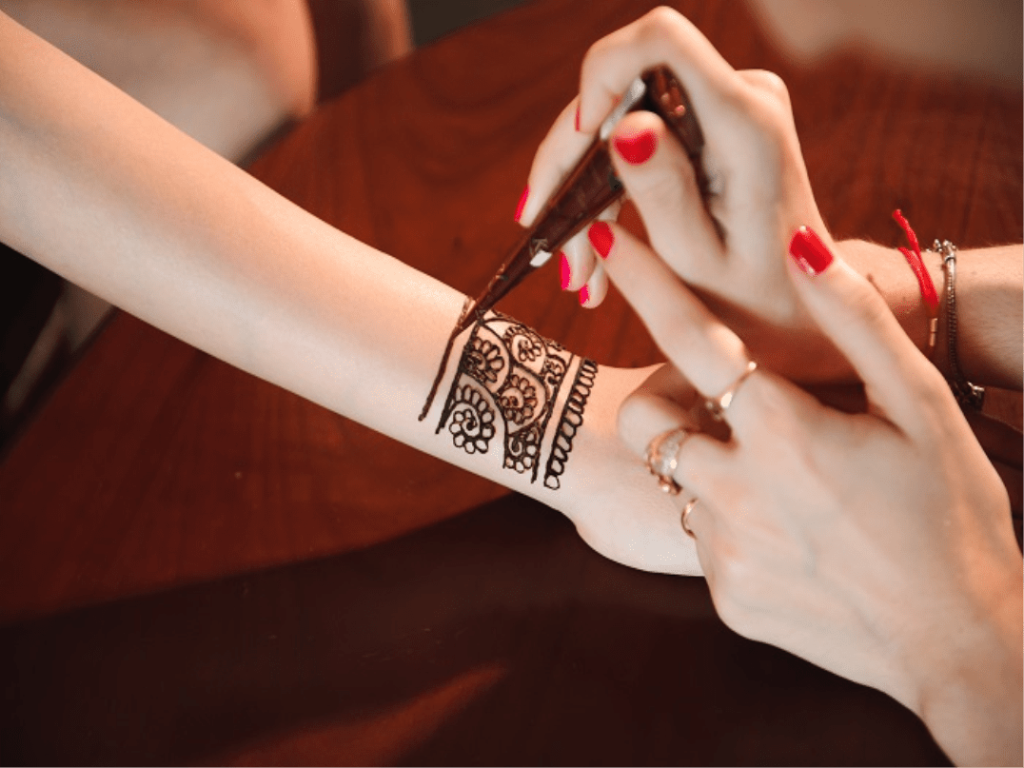The henna night, or laylat al-henna as it’s known in Arabic, is a cherished tradition deeply embedded in Arab culture, particularly as a vibrant pre-wedding celebration. This enchanting evening, primarily for the bride and her female relatives and friends, is a time of joy, beauty, and cultural expression. While the core essence of the henna party arabic remains similar across the Arab world, each region, including Egypt, adds its unique touch and historical significance to this beautiful custom.
The Significance of Henna in Arab Culture
The use of arab henna as a natural dye for body art dates back centuries in the Middle East and North Africa. Beyond its aesthetic appeal, henna holds deep symbolic meanings. It is often associated with good luck, fertility, protection against the evil eye, and blessings for the future. In many henna night culture traditions, the intricate designs applied to the bride’s hands and feet are not merely decorations but also carry symbolic motifs representing happiness, love, and prosperity.
The application of henna is often seen as a communal activity, strengthening the bonds between women as they share stories, songs, and laughter. This gathering creates a supportive and celebratory atmosphere for the bride as she prepares for her transition into married life.
Egyptian Traditions of the Henna Night
In Egyptian tradition, the henna night holds a particularly significant place, often considered the second most important event after the wedding itself. Some Egyptian women even view this night as their “real wedding” because it is an exclusive female gathering where they can dance freely and express themselves without the presence of men. Typically held the night before the wedding, it marks the bride’s last evening in her childhood home.
The origins of the henna night in Egypt are steeped in ancient mythology. Legend has it that the tradition began with the goddess Isis and her unwavering loyalty to her husband Osiris. When Osiris was murdered and his body scattered, Isis’s hands were stained red as she collected his remains. This act of devotion is said to have established the red color of henna as a symbol of a wife’s love and fidelity. Consequently, dyeing the palms of the hands red with henna became a significant custom.
During the henna night latest celebrations in Egypt, the bride is adorned in a beautiful pink or red dress, often made of cotton or silk. A skilled henna artist, known as a hanana, meticulously applies intricate henna patterns to the bride’s hands and feet, and sometimes to the other women present. These designs often feature floral motifs and connected circles extending from the fingertips past the wrists, believed to enhance their beauty.
Beyond the artistry, several unique traditions are associated with the Egyptian henna party arabic:
- Zaghroota: The air is filled with the joyous ululation, or zaghrooda, a high-pitched vocal expression of celebration performed by Arab women.
- Sugar Cubes: Unmarried girls may eat sugar cubes placed on a plate, hoping to be the next to marry.
- Knee Pinching: Another peculiar custom involves unmarried women pinching the bride’s knee with the wish to marry soon after, sometimes even within the same week.
- Rose Water Ritual: In some Egyptian traditions, women place their feet in rose-scented water before the henna application, adding a fragrant and symbolic touch.
While the core traditions remain, the henna night in Egypt, like in other parts of the Arab world, has seen some modern adaptations. Brides might choose to wear various elaborate costumes, sometimes drawing inspiration from Egyptian folklore, other Arab cultures like Moroccan or Hindi styles, or even fairytale themes. The celebration invariably includes a festive dinner for the guests, and the event can range in scale and budget depending on the family’s preferences.
Preserving Culture in Modern Celebrations
Despite modern influences, the henna night culture remains a vital expression of Arab identity and heritage. It’s a testament to the enduring importance of community, tradition, and the celebration of new beginnings. For non-native speakers learning about Arab culture, understanding the significance and beauty of the henna night arabic provides a valuable insight into the rich social customs and historical narratives that shape this vibrant region.
As you delve deeper into the Arabic language and culture, remember that traditions like the henna night offer a colorful and meaningful lens through which to appreciate the values and artistry of the Arab world.
Learn Arabic, dialects, and culture with Kaleela—your gateway to the Arab world. Visit our website or download the Kaleela app today and start your journey!



